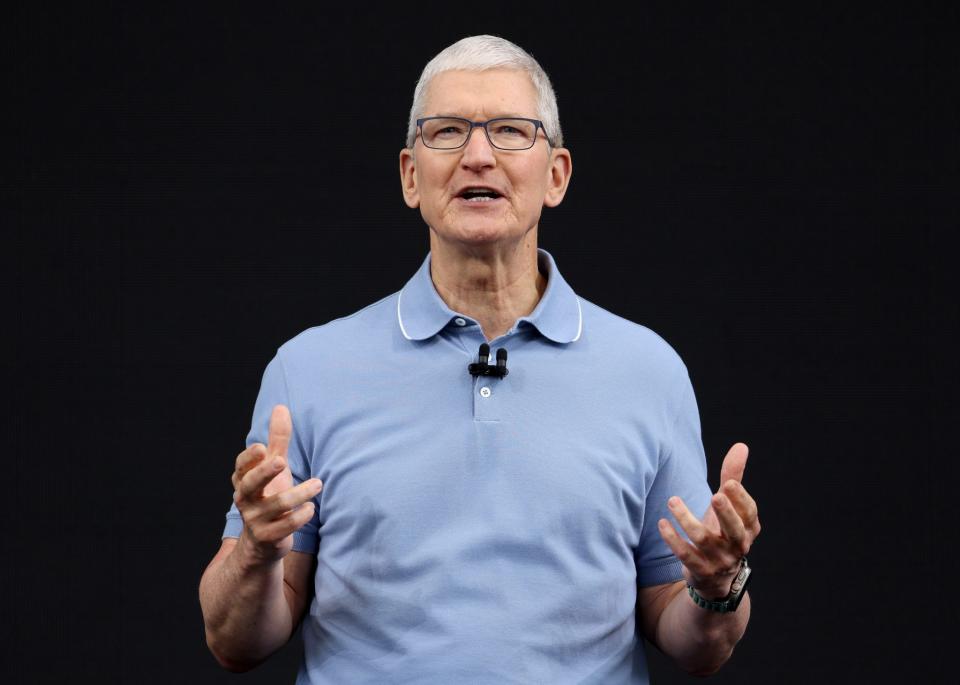Apple’s new headset created a ‘sell-the-news’ event according to KeyBanc analyst who says short-term revenue gains will be ‘immaterial’

Apple stock fell nearly 1% on Monday after the release of its highly anticipated Vision Pro virtual reality headset that one analyst said was costlier than anticipated and overhyped.
The Vision Pro unveiling created a sell-the-news event in Monday’s trading, as is typical for a product launch of its scale, KeyBanc analyst Brandon Nispel wrote in a research note to clients on Monday, saying the “hype leading into the event felt well overdone.”
“Buy the rumor, sell the news” is an investment adage of traders who sometimes try to profit from market volatility in the period leading up to and immediately following major news events. Breaking news has a short-lived impact on stocks, so traders often buy securities based on preannouncement speculation and sell after the news becomes public.
In the week preceding the headset’s launch, Apple’s stock rose over 4%, reaching a new high of over $184 in midday trading on Monday before going into reverse. Just after noon on Tuesday, Apple’s shares were at $178.52.
Nispel said Vision Pro is far from the next iPhone, given its battery and network limitations, but speculated it could replace computer monitors and TVs for some consumers. He also predicted Apple will get little short-term revenue gains from the headset, which isn’t expected to be available until early next year.
“With the device’s retail price of $3,499, we expect an immaterial contribution to AAPL’s revenue assuming a couple hundred thousand units,” Nispel wrote. Vision Pro’s base price is three times higher than Meta’s competing premier model, and it’s uncertain whether Apple can gain traction over established cheaper products.
But Nispel added that Apple’s headset has the ability to create a unique, hard-to-replicate platform.
KeyBanc currently rates Apple as overweight, with a $180 target price, which it has not changed since the headset’s launch.
Apple pitched Vision Pro as a whizbang tool for the entertainment industry, including video game and movie studios, that gives it an entirely new way to reach consumers. Disney CEO Bob Iger even appeared on stage during Apple’s event to tout his company’s partnership with Apple to provide Disney+ streaming through the headset.
Though it is too early to forecast Vision Pro’s impact on the entertainment industry, Nispel wrote that the partnership “brought to life AAPL’s vision (no pun intended).”
The research note called Vision Pro a “solid foundation of a next-generation entertainment and work platform” that could break ground in “spatial computing,” the term Apple used to describe the new category it has entered. Spatial computing is technology that lets users interact with 3D digital spaces and objects. While Vision Pro is not the first augmented reality device—Meta and Sony have released similar products for years—Apple has an advantage because its headset can be integrated with other hardware, software, and services, Nispel wrote.
This story was originally featured on Fortune.com
More from Fortune:
5 side hustles where you may earn over $20,000 per year—all while working from home
Looking to make extra cash? This CD has a 5.15% APY right now
Buying a house? Here's how much to save
This is how much money you need to earn annually to comfortably buy a $600,000 home

 雅虎香港財經
雅虎香港財經 